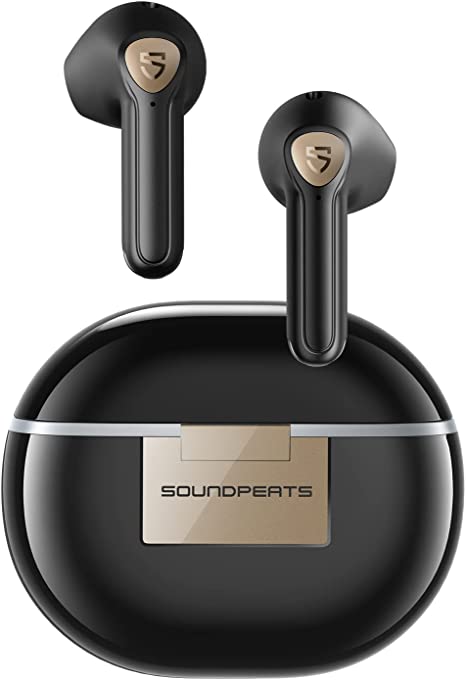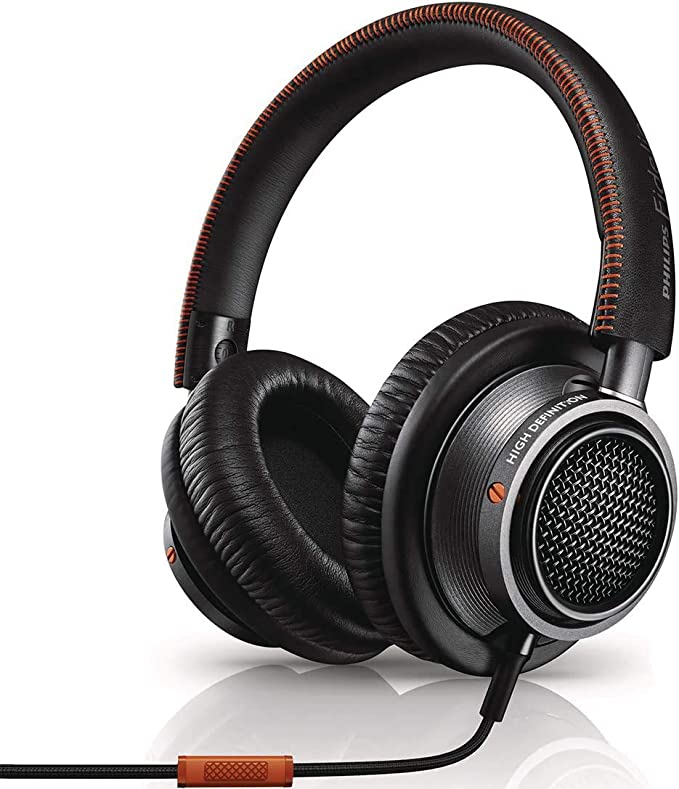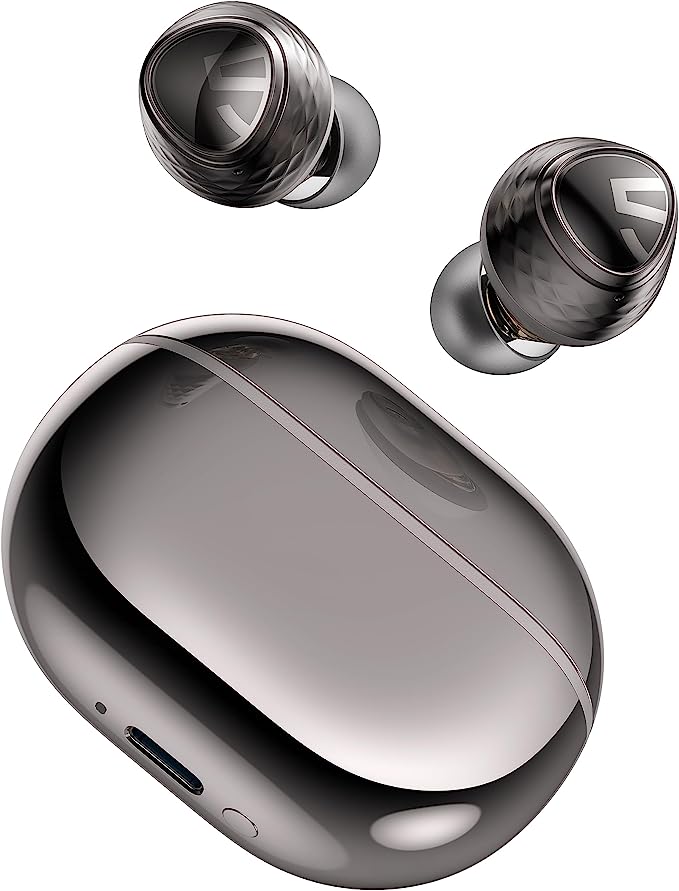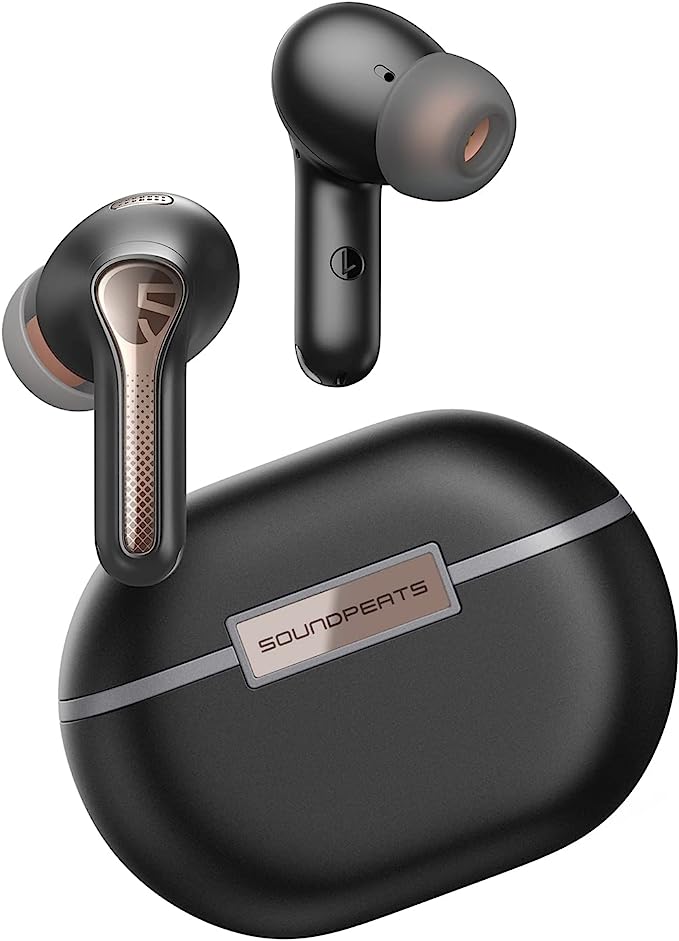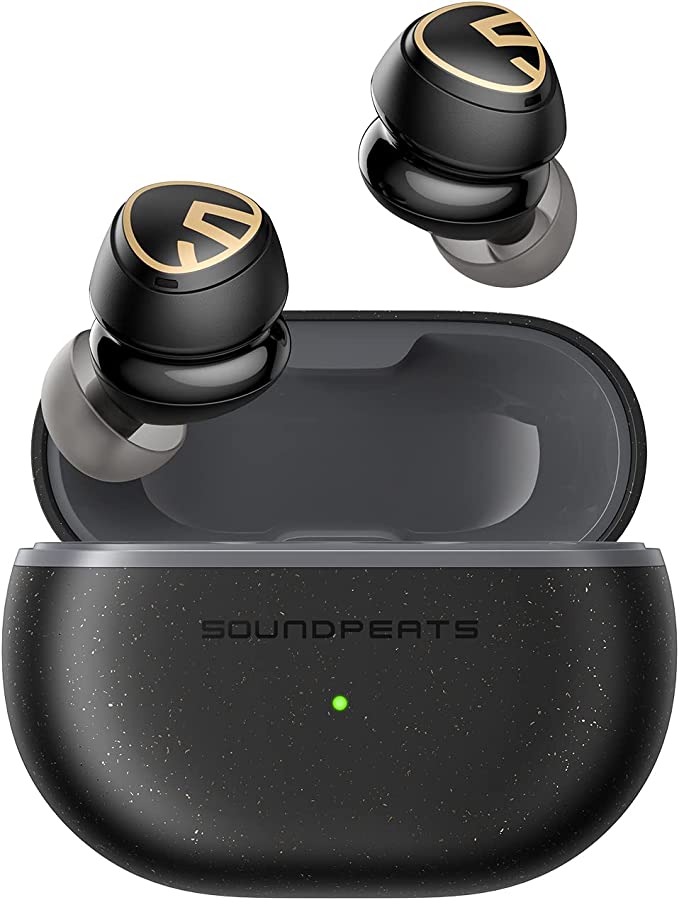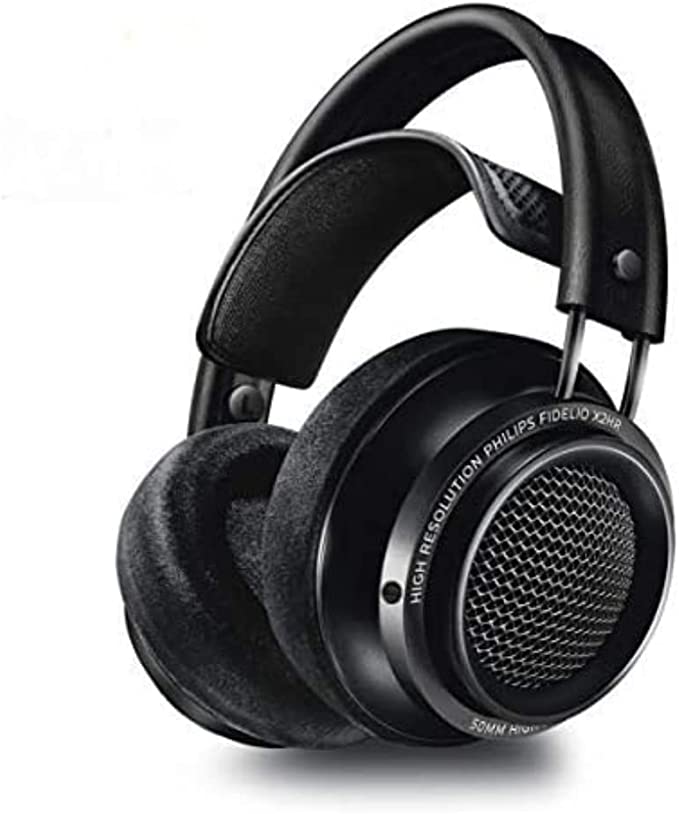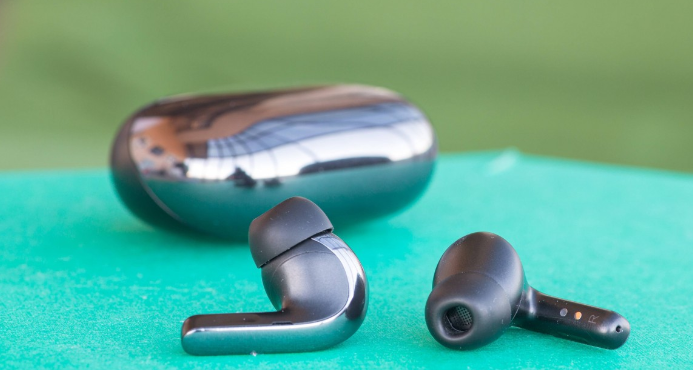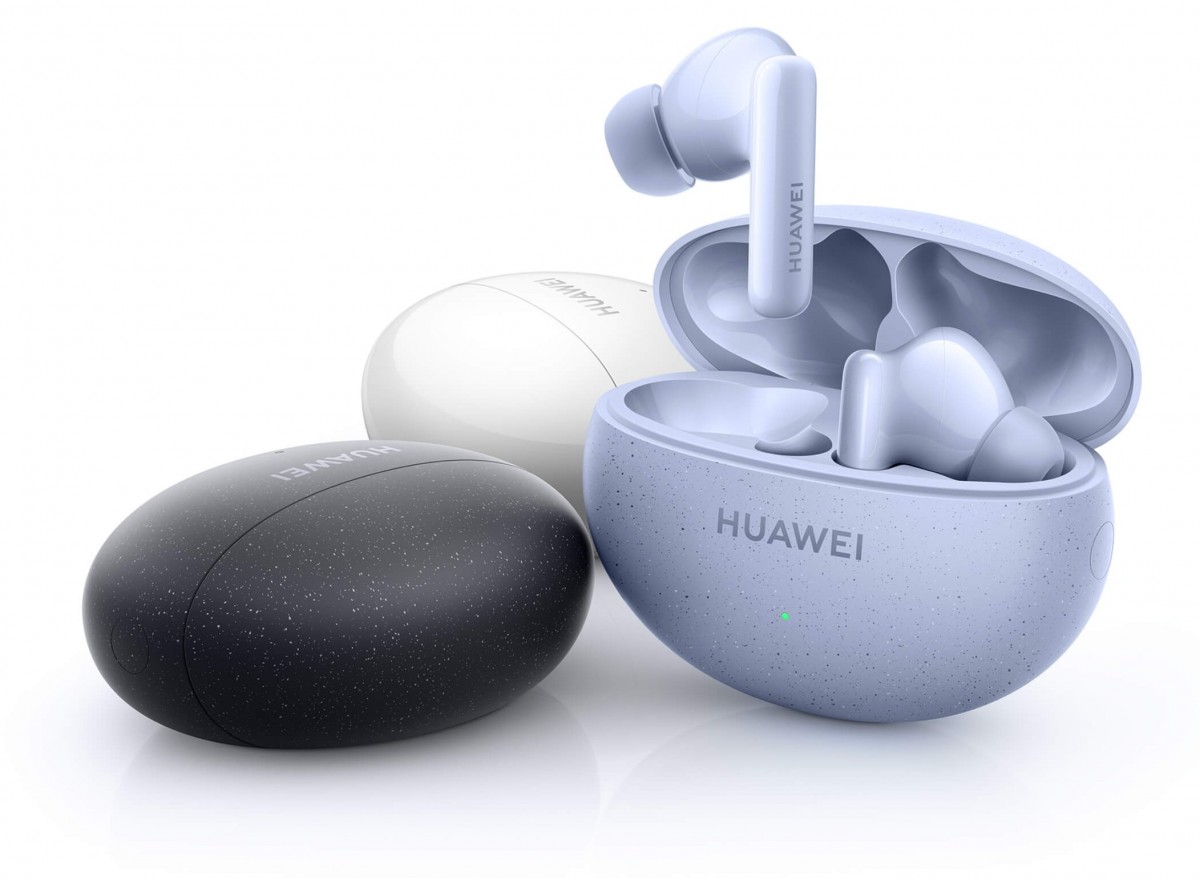SHANLING MG100 IEMs: The Science of Ceramic Drivers, Hi-Res Audio, and Personalized Sound
Update on May 21, 2025, 11:03 a.m.
There’s a unique magic in sound, isn’t there? From the almost imperceptible sigh of a bow across a cello string to the earth-shaking thunder of a stadium rock concert, sound paints our world with emotion and detail. For many of us, the quest to capture and relive these sonic moments with utmost fidelity is a lifelong passion. We seek that intimate connection, that feeling of being right there with the musicians. And increasingly, we turn to sophisticated little devices called In-Ear Monitors, or IEMs, to be our personal guides on this auditory journey.
Today, I want to invite you to explore one such marvel of modern audio engineering: the SHANLING MG100 in-Ear HiFi Headphones. Think of this not as a review, but as a friendly expedition, a chance for us to peek under the hood and understand the remarkable science and artistry that allows such a compact device (the SHANLING MG100, to be precise) to unlock such expansive soundscapes. As an acoustic engineer, I’ve always been fascinated by how we translate the physical world of vibrations into the deeply personal experience of music. So, let’s embark on this journey together.

The Voice of an Artisan: Unpacking the Ceramic Heartbeat
At the very heart of any earphone, the component that breathes life into electrical signals, is the driver. The SHANLING MG100 employs a 10mm dynamic driver, a classic design beloved for its ability to move air effectively and often deliver a rich, natural warmth. But the real story here, the part that makes an audio engineer like myself lean in একটু (a little) closer, is the diaphragm material: ceramic.
Now, you might associate ceramics with pottery or perhaps high-tech applications in aerospace. In the world of sound, a ceramic diaphragm is a bit like a Formula 1 car’s chassis – incredibly stiff, remarkably lightweight, and engineered for blistering performance. For decades, diaphragm materials have evolved, from humble paper cones and polymer films (like Mylar) to exotic metals like beryllium and titanium. Each step sought a better balance of critical properties. Why the fuss? Imagine a drum skin. If it’s too flimsy, it’ll wobble and distort when struck hard. If it’s too heavy, it won’t respond quickly to rapid beats. A ceramic diaphragm, when engineered correctly, offers a superb combination of:
- High Stiffness (Young’s Modulus): This means it resists deforming or “breaking up” when reproducing complex, loud passages or high frequencies. It moves more like a perfect piston, translating the electrical signal into sound waves with greater accuracy and significantly lower distortion. You hear this as exceptional clarity and a cleaner sound, especially when the music gets busy.
- Low Mass: Being lightweight allows the diaphragm to accelerate and decelerate with incredible speed. This is crucial for what we call transient response – the ability to reproduce sharp, sudden sounds like the snap of a snare drum, the pluck of a guitar string, or the nuanced attack of a piano hammer. With a fast ceramic diaphragm, these details emerge with startling realism, making music feel more alive and immediate.
- Good Internal Damping: This refers to the material’s ability to dissipate unwanted vibrational energy quickly, preventing it from “ringing” or smearing subsequent sounds. It helps in achieving a cleaner, more articulate sound.
Supporting this advanced diaphragm within the MG100 is an Ultra-Linear Dual Magnet system. Think of this as providing a more powerful and evenly distributed magnetic field to drive the voice coil and, in turn, the diaphragm. More control means more precision. This is complemented by a Dual-Cavity structure behind the driver. This isn’t just empty space; the cavities are acoustically designed to manage airflow and back pressure, which can extend the dynamic range, particularly in the low frequencies, and further reduce distortion by controlling resonances. It’s like giving a singer perfectly designed acoustics to perform in.
Finally, the HCCAW (High-purity Copper-Clad Aluminium Wire) voice coil acts as the conductor’s baton, translating the amplifier’s instructions to the diaphragm. Aluminium keeps it light for speed, while a copper cladding ensures excellent electrical conductivity. It’s this symphony of precise material science and acoustic design that allows the MG100’s driver to sing with such authority and finesse, laying the foundation for what many would describe as true “audiophile sound.”

Beyond the Horizon of Hearing: The Promise of Hi-Res Audio
You’ll often see the “Hi-Res Audio” logo بادامی (adorning) high-quality audio gear, and the SHANLING MG100 proudly bears this certification, boasting a frequency response from a deep 15Hz all the way up to an airy 40,000Hz (40kHz). But what does “Hi-Res Audio Science” truly entail beyond these numbers?
Let’s take a step back. For decades, the Compact Disc was our digital audio benchmark, offering 16-bit resolution and a 44.1kHz sampling rate. This was a massive leap at the time, governed by the Nyquist-Shannon sampling theorem, which, in very simple terms, states that to accurately capture a frequency, you need to sample it at least twice as fast. So, 44.1kHz sampling allowed for frequencies up to about 22.05kHz to be recorded – covering the generally accepted range of human hearing (roughly 20Hz to 20kHz for young, healthy ears).
Hi-Res Audio, however, pushes these boundaries significantly. It typically refers to digital audio files with a higher sampling rate (like 96kHz or 192kHz) and a greater bit depth (usually 24-bit).
- Higher Sampling Rate (e.g., 40kHz capability for headphones): This allows the system to reproduce frequencies well beyond that 20kHz threshold. Now, the “40kHz question” is a fascinating one. While most of us don’t consciously “hear” sounds at 30kHz or 40kHz as distinct tones, some research and anecdotal evidence suggest that these ultrasonic frequencies, present in live acoustic music, might interact with audible frequencies, contributing to a greater sense of “air,” “space,” and realism in the perceived sound. It’s about capturing the entire sonic environment, not just the directly audible notes.
- Greater Bit Depth (e.g., 24-bit sources): Think of bit depth like the number of steps on a staircase representing volume. 16-bit audio has 65,536 steps. 24-bit audio offers over 16.7 million steps! This translates to a much wider dynamic range (the difference between the softest whisper and the loudest roar) and far finer gradations in volume, allowing for the reproduction of subtle nuances, delicate decays of notes, and a “blacker” background from which details can emerge.
The journey towards Hi-Res Audio is part of our ongoing quest to get closer to the original studio master recording, to hear what the artists and engineers heard during creation. For listeners, this means the potential for a richer tapestry of sound, more intricate details, and a more immersive experience, especially with well-recorded acoustic, classical, or jazz music where those subtle spatial cues and harmonic complexities really shine.

The Electrical Handshake: Impedance, Sensitivity, and Your Music Player
Beyond the acoustics, a crucial aspect of any headphone is its electrical compatibility with your source device. The SHANLING MG100 specifies an impedance of $16\Omega$ (Ohms) and a sensitivity of $113 \pm 3\text{dB}$ (decibels). These aren’t just numbers; they tell a practical story.
-
Impedance ($16\Omega$): Imagine water flowing through a pipe. Impedance is somewhat like the pipe’s resistance to that flow. In electrical terms, it’s the opposition an earphone presents to the audio signal current from your amplifier (be it in your phone, laptop, or a dedicated Digital Audio Player - DAP). A lower impedance, like the MG100’s $16\Omega$, generally means the earphone requires less voltage to achieve a certain volume. This makes it “easier to drive.” The practical benefit for you? These Audiophile Earphones will likely perform very well even when plugged directly into a smartphone or portable music player, without demanding a powerful, specialized headphone amplifier to sing loudly and clearly.
-
Sensitivity ($113 \pm 3\text{dB}$): This tells us how loud the earphones will play for a given amount of electrical power, typically measured at 1 milliwatt (mW). Think of it like a car’s fuel efficiency – how far it goes on a gallon of gas. A higher sensitivity figure, such as $113\text{dB}$, indicates that the MG100 is quite efficient. It doesn’t need a lot of power from your device to reach satisfying listening volumes.
Together, a low impedance and high sensitivity usually mean an earphone is very versatile and “friendly” to a wide range of source devices, which is excellent news for those of us who enjoy our high-quality audio on the move.
The Messenger Matters: A Scientific Look at Cables and Connections
Often a topic of heated debate in audiophile circles, the cable connecting your earphones to your source is more than just a piece of wire; it’s the critical pathway for that delicate audio signal. The SHANLING MG100 pays considerable attention to this, featuring a cable made from Furukawa Monocrystalline Copper, employing Litz braiding, and terminated with robust MMCX connectors and interchangeable 3.5mm and 4.4mm plugs. Let’s unravel the science.
-
The Purity of the Path (Furukawa Monocrystalline Copper): Copper is an excellent conductor, but its internal structure matters. Standard copper has many crystal grain boundaries. Think of these as tiny hurdles the electrical signal (our music) has to jump over, potentially causing minute signal loss or distortion. Monocrystalline copper, like that from Furukawa, is processed to have very large, continuous crystal structures, sometimes meters long. Fewer boundaries mean a smoother, less impeded path for the electrons, aiming for the purest possible signal transmission.
-
Taming the Current (Litz Braiding): At higher audio frequencies, an interesting electrical phenomenon called the “skin effect” occurs. Electrons tend to crowd towards the surface (the “skin”) of a solid conductor, effectively reducing the wire’s usable cross-sectional area and increasing its resistance at those frequencies. This can subtly alter the tonal balance. The “proximity effect,” where currents in adjacent conductors interact, can also be an issue. Litz wire construction combats these by using multiple, very fine strands of wire, each individually insulated, and then woven or braided together in specific patterns. This design forces the current to be more evenly distributed across all the strands, even at high frequencies, thus maintaining signal integrity across the audible spectrum. It’s a rather clever piece of electrical engineering, ensuring that the highs travel just as efficiently as the mids and lows.
-
The Freedom to Change (MMCX Connectors): Those little gold-plated connectors where the cable meets the earpieces are called MMCX connectors. Their primary advantage is reliability and detachability. Cables are often the first point of failure in earphones due to wear and tear. A detachable MMCX cable means you can easily replace it if it gets damaged, or even upgrade to a different cable with different material properties or ergonomics if you choose. This significantly extends the lifespan and versatility of your investment.
-
The Balanced Advantage (4.4mm Plug): The MG100 offers both a standard 3.5mm single-ended plug and a 4.4mm balanced plug. What’s “balanced” all about? In a typical single-ended connection (like the 3.5mm), both left and right audio channels share a common ground path. In a balanced connection, each channel gets its own dedicated positive (+) and negative (-) signal wires, plus a separate ground. The magic happens at the amplifier: it sends two versions of the audio signal down each channel’s pair of wires – one normal and one phase-inverted. Any noise or interference picked up along the cable tends to affect both wires equally (this is “common-mode” noise). At the earphone end (or within a balanced amplifier), the inverted signal is flipped back and combined with the normal one. The original audio signals add up, while the common-mode noise, now also phase-inverted on one path, effectively cancels itself out. The result? A significantly lower noise floor, often leading to a perception of “blacker” backgrounds, improved clarity, and enhanced stereo separation, especially noticeable with high-quality balanced sources.
It’s clear that the journey of the audio signal from your player to the driver is paved with intentional scientific choices, all aimed at preserving its purity and integrity.
Your Personal Sonic Sculptor: The Magic of Tuning Nozzles
One of the most intriguing features of the SHANLING MG100 Ceramic Driver IEM is the inclusion of replaceable sound tuning nozzles. These aren’t just cosmetic; they are tiny acoustic tools that allow you to subtly sculpt the sound signature to your preference. How can such a small component make a difference?
Think of the nozzle as the final pathway that directs sound from the driver into your ear canal. Its length, diameter, internal damping (if any), and even the material it’s made from can act as an acoustic filter. This is due to principles of acoustic impedance – essentially, how much resistance the air encounters as it flows through the nozzle.
- Altering Resonances: Tiny changes in the nozzle’s dimensions can shift the resonant frequencies within that small air column. This is somewhat analogous to how changing the length or bore of a wind instrument’s pipe alters its pitch, or how the shape of a small room affects its acoustics.
- Filtering Effects: Different materials (the MG100 might offer options like brass for a “balanced” sound or stainless steel for a “bass-rich” or “ambient” feel) can also have slightly different damping characteristics or interact with sound waves in subtly different ways. Some nozzles might incorporate tiny acoustic dampers (like a piece of foam or mesh) to smooth out certain frequency peaks.
The effect is typically a gentle tailoring of the frequency response – perhaps a slight lift in the bass, a touch more sparkle in the treble, or a more neutral presentation. This allows you to fine-tune the earphones to better match your personal listening preferences, different music genres, or even the acoustic properties of different ear tips you might use. It’s like having a miniature, very precise equalizer built right into the hardware, giving you a degree of sonic authorship.
Crafted for Sound, Built to Last: The Art of Acoustic Enclosures
Finally, we arrive at the physical shell of the earphone – the housing. With the SHANLING MG100, this is crafted from 7000 series Aluminium Alloy using a 5-axis CNC (Computer Numerical Control) machining process. This might sound like manufacturing jargon, but it has profound implications for both sound quality and durability.
-
The Unsung Hero (Acoustic Chambers): An earphone housing is far more than a pretty container for the driver. It is part of the acoustic system. Its internal shape, volume, and material properties critically influence the sound. A well-designed housing, like one precision-machined from aluminium, helps to:
- Control Unwanted Resonances: All materials vibrate. The goal is to use a material and shape that either dampens unwanted resonances or shifts them out of the audible (or problematic) frequency range. A rigid, well-damped housing prevents the shell itself from “singing along” with the music in a way that colors or distorts the sound.
- Provide a Stable Platform: The driver needs a rock-solid foundation to perform optimally, ensuring that its vibrational energy is efficiently converted into sound waves directed towards your ear, not wasted in vibrating the housing.
-
Precision Engineering (5-axis CNC Machining): This advanced manufacturing technique allows for the creation of very complex, precise internal and external shapes. For an IEM, this means acoustic pathways and driver mounts can be sculpted with extremely tight tolerances, ensuring consistency from one unit to the next and allowing engineers to realize their exact acoustic designs without the compromises often imposed by simpler manufacturing methods.
-
Material Matters Again (Aluminium Alloy): 7000 series aluminium is known for its excellent strength-to-weight ratio and good damping characteristics. It’s robust enough to withstand daily use, light enough for comfort (each MG100 earpiece weighs a mere 5.6 grams), and acoustically more inert than many plastics.
-
Comfort in a Complex World: This precision also extends to ergonomics. Lightweight materials and the ability to machine smooth, organically curved shapes mean the MG100 can be designed to fit snugly and comfortably in a wide variety_of ear shapes for extended listening sessions without fatigue. Good Acoustic Engineering always considers the human interface.
So, the next time you hold a pair of finely crafted IEMs like the SHANLING MG100, remember that its form is intrinsically linked to its function, a testament to the intricate dance between material science, manufacturing precision, and acoustic design.

Concluding Thoughts: The Symphony of Science and Soul
Our journey through the inner workings of the SHANLING MG100 reveals a fascinating tapestry where material science, electrical engineering, acoustic principles, and meticulous manufacturing all converge. From the lightning-fast response of its ceramic heart to the purity of its copper veins, from the expansive potential of Hi-Res Audio to the personalized touch of its tuning nozzles, every element is a considered choice in the pursuit of a single, lofty goal: to reproduce sound with captivating fidelity and profound musicality.
But beyond the specifications and the science, what truly matters is the human experience. These technologies are not ends in themselves; they are tools, bridges that connect us more deeply to the music, the stories, and the emotions that artists pour into their work. The ultimate “Hi-Res” experience, the most “balanced” sound, is the one that resonates with your soul, the one that makes you forget the technology and simply lose yourself in the music.
I hope this exploration has not only demystified some of the science behind these remarkable little devices but has also kindled your curiosity to listen more critically, to explore further, and to continue your own personal quest for sonic truth. The world of audio is a universe of wonders, always evolving, always inviting us to listen a little closer.
